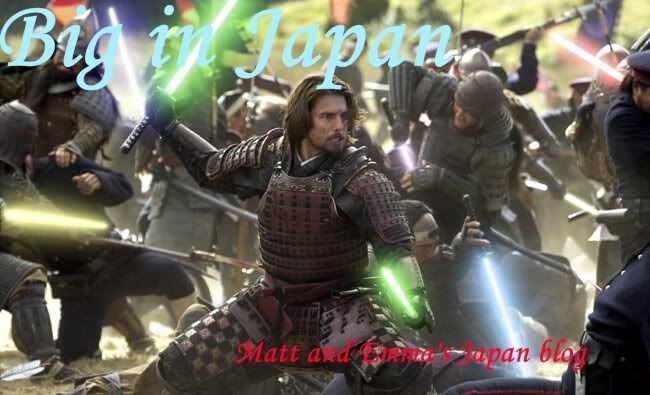. . . such as the Jehovah's Witnesses knocking at your door. Or in our case, peeking in through the open door while we were putting away the groceries on a Tuesday night.
In a country that is not only overwhelmingly Buddhist and Shinto, but in which a syncretic approach to religious observance predominates, the experience of having the JWs tap on your door as they would in Australia is a tad disorienting, to be frank. Had this been Australia, I would have relished the opportunity to engage these people--I am not as reluctant nowadays to debate the Saturday morning religious callers as I once might have been, for reasons which you'll have to ask me in private. On this occasion, given that our visitors were Japanese, I settled for as polite a "No thankyou, I'm not interested" as I could manage. I hope I didn't seem too rude.
There are apparently more than 200, 000 JWs in Japan. Suppressed by Imperial Japan in the interwar period, proselytism by American missionaries in the 60s led to a rapid growth in Japanese converts over the last three decades of the 20th century. (Growth has fallen off significantly since then.) The country was visited by the founder of the sect, Charles Taze Russell, in 1911, on a world tour to convert the "heathens." He described the prevailing Japanese attitude towards religion as "toward infidelity, doubt and atheism." My kind of place. :)
Wednesday, October 31, 2007
Friday, October 26, 2007
Watching An Inconvenient Truth in Japanese
Last Wednesday I joined the first-years in the gymnasium for a screening of An Inconvenient Truth. Since I'd already seen the film last year, I didn't mind that it had been dubbed into Japanese. Plus, such is Gore's dexterity with Keynote (Apple's version of PowerPoint)--not to mention that crane he uses--that his presentation would be easy to follow in any language.
I found it compelling (and polls indicate that about 70% of Japanese are concerned about global warming); but I did notice a few students seizing the opportunity of a darkened room to catch up on some shut-eye. They usually have to wait for my classes in order to do that!
P.S. On the subject of global warming, here's a YouTube that has been doing the rounds:
I found it compelling (and polls indicate that about 70% of Japanese are concerned about global warming); but I did notice a few students seizing the opportunity of a darkened room to catch up on some shut-eye. They usually have to wait for my classes in order to do that!
P.S. On the subject of global warming, here's a YouTube that has been doing the rounds:
Sunday, October 14, 2007
Last weekend's journey to Minas Tirith and Rivendell . . .
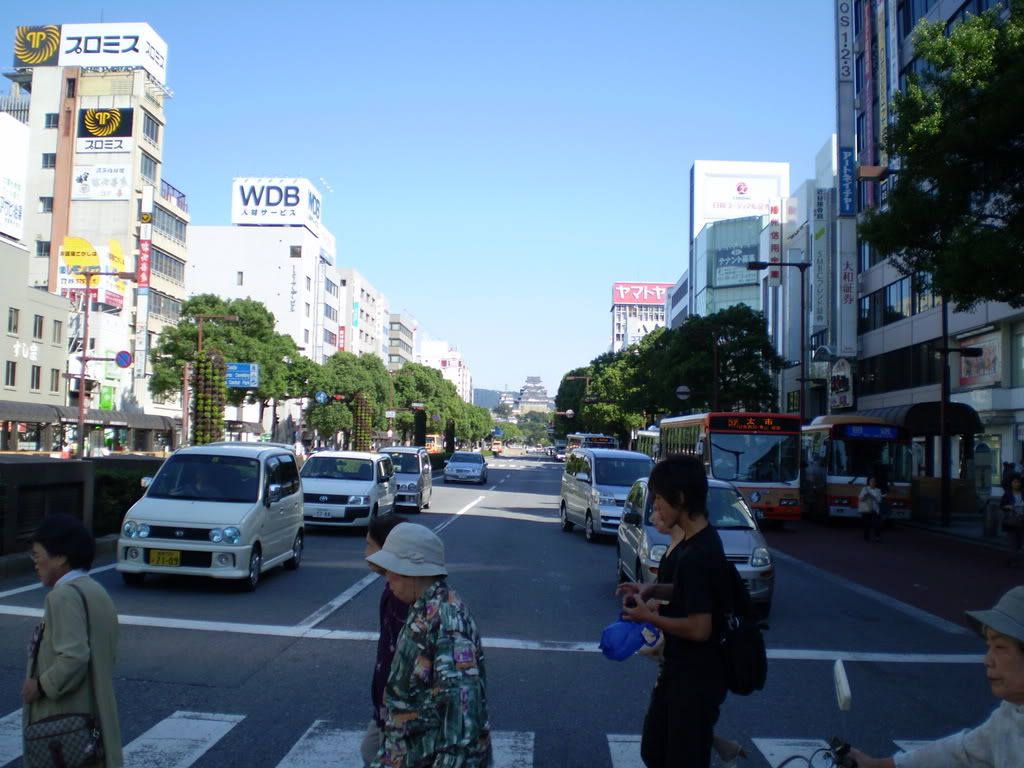 . . . a.k.a. Himeji Castle and Kokoen.
. . . a.k.a. Himeji Castle and Kokoen.Last Saturday Emma and I took a train to Himeji to see its famous castle--the first castle I had ever visited since Kryal Castle in 1988. (Kryal Castle is Australia's most well-known medieval castle--which is interesting, since Australia was only first settled by Europeans in the eighteenth century.) I won't say too much about it--I'll let Photobucket and Wikipedia do most of the talking--other than to remark that one of the first things you notice as you emerge from the train station and gaze down what has to be one of the widest streets in Japan (one of the JTEs at my school informs me that said street was purpose-built for a visit by the Emperor soon after the Second World War), is that--despite the fact that Himeji is a city of half a million people and is abundant in tall buildings--the eponymous castle really dominates the landscape.
The other thing you notice is that Himeji itself is roomy--big in the way an Australian city or large town is roomy--which is most unlike the Japan we had hitherto experienced. (Well, certainly unlike Tarumi; though I suppose Seishin-chuo, the Joondalup-esque area of Kobe where I work, is roomy in its own way.) Japan is one of the world's most populous nations, and all of those people have to squeeze onto a set of very small islands--so often you find yourself on very narrow streets, hemmed in by towers and tenements. Central Himeji just doesn't feel like that.
Anyway, here a couple of Himeji Castle slideshows. (I apologise if they slow down your browser.)
And here is Nishi-Oyashiki-ato Kokoen. It is adjacent to Himeji Castle, and used to be the residence of a samurai lord, apparently. Now it comprises a series of serene and beautiful gardens (let's just say Jamie Durie and Scott Cam couldn't hold a scented candle), along with a teahouse. (They don't do Devonshire, alas, but the lady at the desk is very helpful and speaks excellent English.)
We also visited Himeji's art gallery, having bumped into Daniel Carter at a park along the way. (Where the three of us discovered that not only are some dogs just as skilled at frisbee as humans, they are also permitted to drink from our water fountains. Now, that's just wrong.) The gallery featured an exhibition on Surrealism to which we arts graduates--true to form--couldn't say no. ALTs: if the exhibition reaches an art gallery near you, it's well worth the admission.
Sunday, October 7, 2007
School sports day
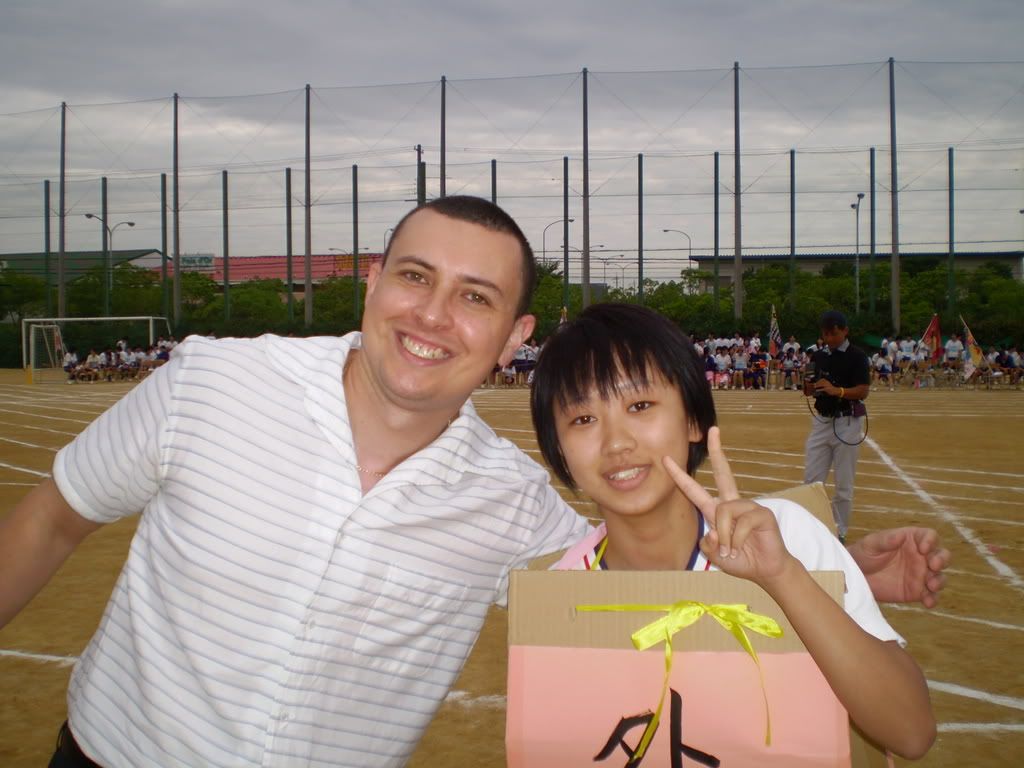 Being averse to most forms of physical activity in my school days, I always hated school sports carnivals. (Well: except for the Year 8 carnival, where I won first, second, and third place ribbons in the 100, 200 and 400m. I was in 'C' division--one or two divisions above wheelchairs and zimmer frames.) I always considered school sports as a form of psychological torture designed to shatter the self-esteem of those students who, like myself, lacked the agility and hand-eye co-ordination of our peers (some of the latter who had few qualms about pointing these failings out to us in no uncertain terms), causing them to seek solace in eating disorders, heavy metal music, fantasy role-playing games and so forth. (Maybe that's how the whole 'emo' trend got started; I don't know.)
Being averse to most forms of physical activity in my school days, I always hated school sports carnivals. (Well: except for the Year 8 carnival, where I won first, second, and third place ribbons in the 100, 200 and 400m. I was in 'C' division--one or two divisions above wheelchairs and zimmer frames.) I always considered school sports as a form of psychological torture designed to shatter the self-esteem of those students who, like myself, lacked the agility and hand-eye co-ordination of our peers (some of the latter who had few qualms about pointing these failings out to us in no uncertain terms), causing them to seek solace in eating disorders, heavy metal music, fantasy role-playing games and so forth. (Maybe that's how the whole 'emo' trend got started; I don't know.)But I have to take my hat off to Japanese students, who to a girl and boy participate in their school carnivals with far more gusto than I could ever manage, and (to a foreigner's eye, at least) with far less self-consciousness. Apparently, school sports days in Japan originated in the Meiji period, during which Japan emerged from isolationism and endeavoured to become a world power on a par with Western countries like the UK and the US. The Victorian preoccupation with health and fitness was mirrored by the Japanese education minister's decree that sports days be held in all schools "in order to improve the physical abilities of Japanese people, who were seen as poor at sports compared to Westerners." In any event, the Japanese continue to take their sports carnivals very seriously.
Case in point: they have Olympic-style opening ceremonies, complete with competing factions marching into the arena behind their own banners, the raising of the school and national flags, and the school band in full song. Oh, and I almost forgot . . .
The definitive you-know-you're-in-Japan-when moment: the principal leading the entire school in an aerobics session. All they are missing are the business suits.
For much of the day I kept myself occupied honing my skills as a sports photographer, but as you can see . . .
. . . there's only so much a $250 digital camera can do. But I did get involved in other ways.
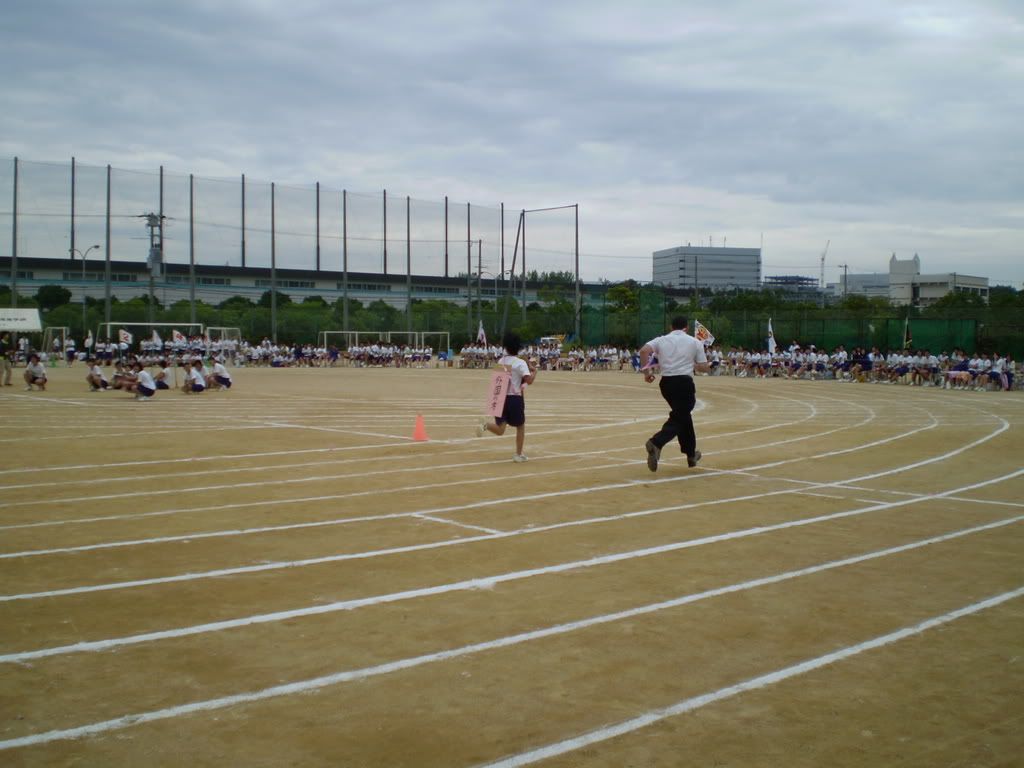 This is a picture of me desperately trying to stave off cardiac arrest, as I run around the oval with my partner. The event in question involves participants racing to either of two tables in the middle of the oval to collect a placard, on which is written a set of instructions, e.g "Find a person wearing glasses." (Or, in my case, "Find a person from a foreign country.") The players then must search the crowd for a person fitting that description, collect him or her, race to another table where both are fitted with a coloured length of ribbon, and then run with their victims around the oval.
This is a picture of me desperately trying to stave off cardiac arrest, as I run around the oval with my partner. The event in question involves participants racing to either of two tables in the middle of the oval to collect a placard, on which is written a set of instructions, e.g "Find a person wearing glasses." (Or, in my case, "Find a person from a foreign country.") The players then must search the crowd for a person fitting that description, collect him or her, race to another table where both are fitted with a coloured length of ribbon, and then run with their victims around the oval.Much of the day's events consisted of races and relays: there were no field events, like high jump or long jump, such as one might expect to find at an Australian school sports carnival. But there was half-time entertainment, in the form of traditional Japanese drum music (courtesy of a troupe from the local elementary school), and the school cheerleading squad:
(I'm told those kids are about 5 or 6 years old, on average.)
And there were many lighthearted activities to keep fans and participants entertained, from conventional tug-of-war to a form of tug-of-war-meets-rugby-union involving lengths of bamboo cane.
And I'll never forget the image of 40 students jumping a massive length of rope--an activity in which I had not participated nor seen anyone else participate in since the early of years of primary school (and even then on a much smaller scale).
I don't know how comfortable I'd feel about Australian students whacking each other with sticks a la kendo, but that bamboo cane rugby game is one that definitely needs to be added to the schedule!
Wednesday, October 3, 2007
Sake and sardines
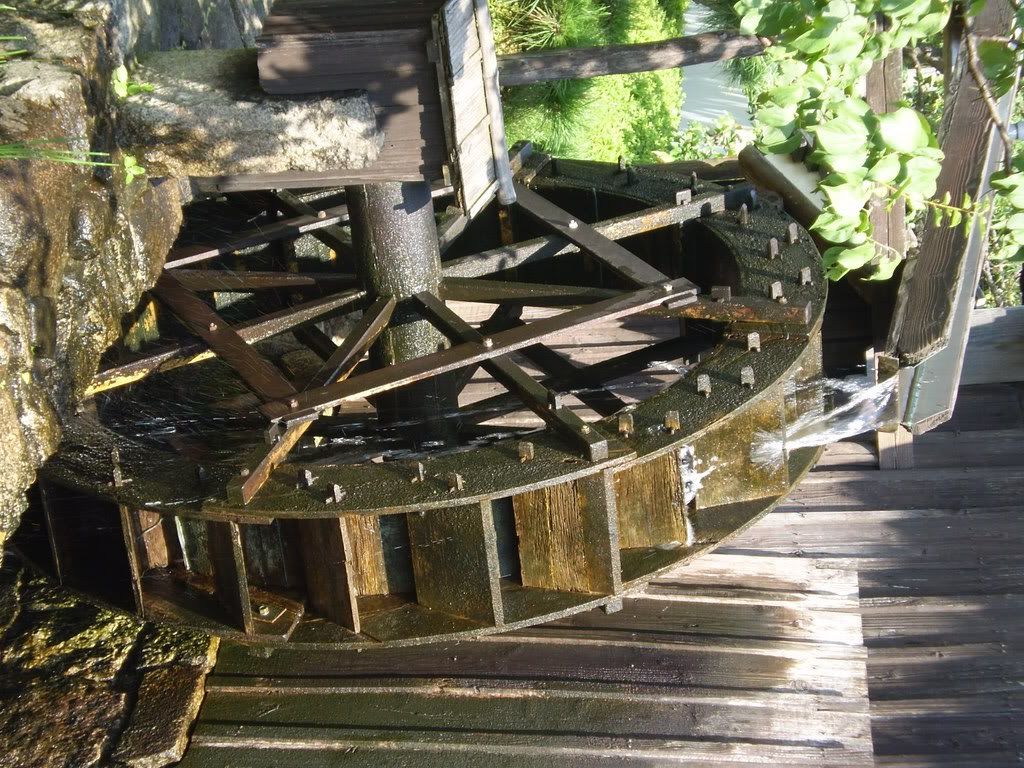 It turns out we arrived in Japan right in the middle of public holiday season: three out of four weekends have been long weekends. This has given us a lot of time to explore our local region, Kobe.
It turns out we arrived in Japan right in the middle of public holiday season: three out of four weekends have been long weekends. This has given us a lot of time to explore our local region, Kobe.On one particular long weekend we journeyed to a sake museum. For those readers who don't know, sake is an alcoholic drink made from fermented rice. When done poorly, sake tastes like what methylated spirits smells like; when done well, it tastes really quite nice.
 After a very informative English video on the ins and outs of making sake (on which I am now "full bottle") and touring the relics of traditional sake making materials, I almost drank a full bottle of sake! To sell their wares, the museum gives samples to their visitors and I think they got a little excited to have foreign guests, as they got us to try just about every available sake drink they had on offer. However, in retrospect, perhaps this was just a clever ploy to get visitors to buy more products, the logic being the more tipsy they are the more likely they are to buy. Indeed, it worked--as Matt and I are now the proud owners of some sweet plum sake! Check
After a very informative English video on the ins and outs of making sake (on which I am now "full bottle") and touring the relics of traditional sake making materials, I almost drank a full bottle of sake! To sell their wares, the museum gives samples to their visitors and I think they got a little excited to have foreign guests, as they got us to try just about every available sake drink they had on offer. However, in retrospect, perhaps this was just a clever ploy to get visitors to buy more products, the logic being the more tipsy they are the more likely they are to buy. Indeed, it worked--as Matt and I are now the proud owners of some sweet plum sake! Check 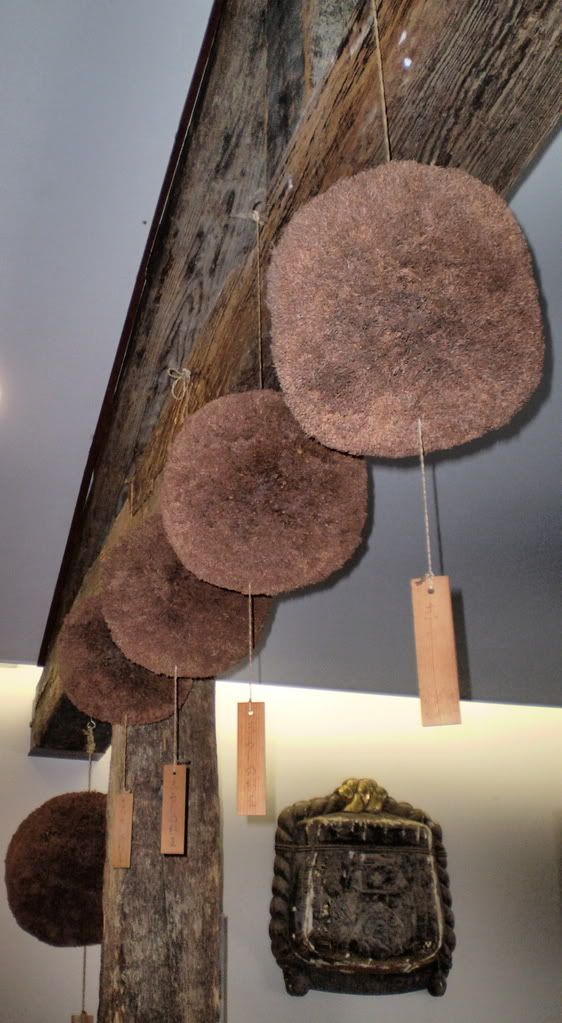
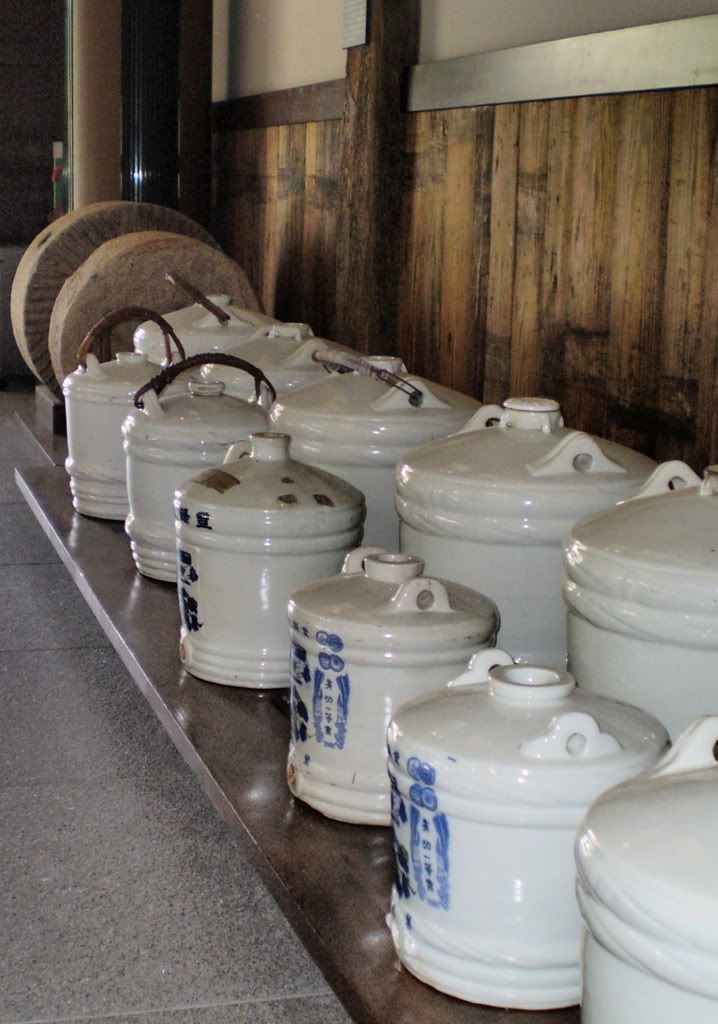 out the pictures below as it really was a delightful place; cameras, unfortunately, are yet to capture smell, but take it from me, the subtle smell of aged cedar mixed with the dim shadows that pervaded the place really transported us back to a different world. (Where men were men, and real men got naked in giant vats of steaming rice.)
out the pictures below as it really was a delightful place; cameras, unfortunately, are yet to capture smell, but take it from me, the subtle smell of aged cedar mixed with the dim shadows that pervaded the place really transported us back to a different world. (Where men were men, and real men got naked in giant vats of steaming rice.)
Then it was off for sardines; however, not the eating kind. Kobe is a port city, and typical of port cities it has a highly concentrated population with the employment that international trade brings. However, this is compounded by the fact that Kobe is wedged between a mountain range and the ocean. This is where the sardines enter the picture.
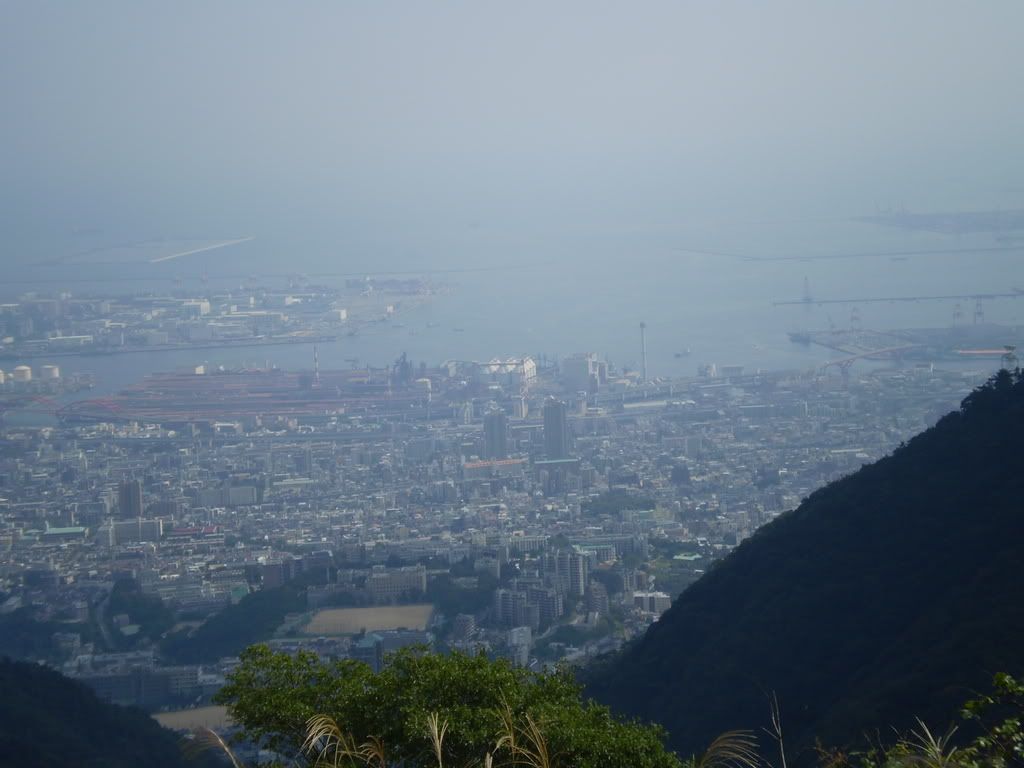 We traveled up Mt Rokko, the highest mountain in the region, and from here we got our first birds-eye-view of Kobe's geography. (And I mean literally--on the floor of the museum at the top of the mountain there is a giant satellite image of Kobe and the Rokko Mountains.) As you can see from the pictures below, possibly the best way to describe how the city appears from such a height is by comparison to sardines squished into a tiny tin. It is a truly foreign way of living to the eyes of Perthites used to flat landscapes and hectares of backyard. It's a magnificent sight and especially great when viewed from the top of a mountain where the air temperature is 6 degrees lower than the sauna we've been enduring at sea-level.
We traveled up Mt Rokko, the highest mountain in the region, and from here we got our first birds-eye-view of Kobe's geography. (And I mean literally--on the floor of the museum at the top of the mountain there is a giant satellite image of Kobe and the Rokko Mountains.) As you can see from the pictures below, possibly the best way to describe how the city appears from such a height is by comparison to sardines squished into a tiny tin. It is a truly foreign way of living to the eyes of Perthites used to flat landscapes and hectares of backyard. It's a magnificent sight and especially great when viewed from the top of a mountain where the air temperature is 6 degrees lower than the sauna we've been enduring at sea-level.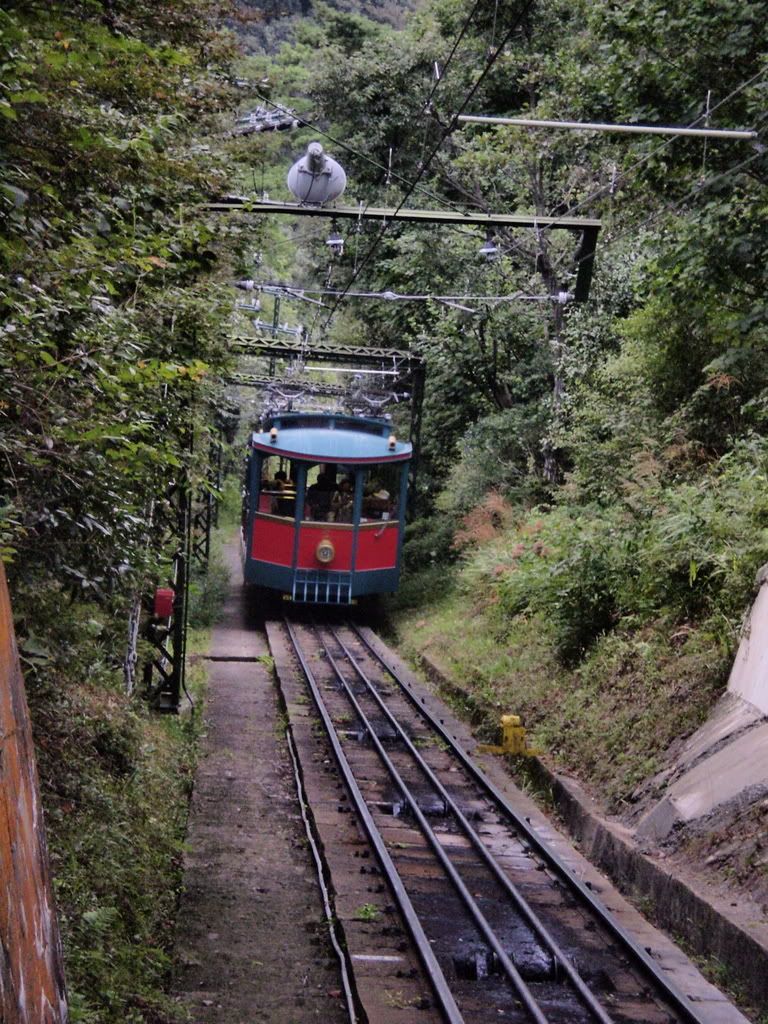
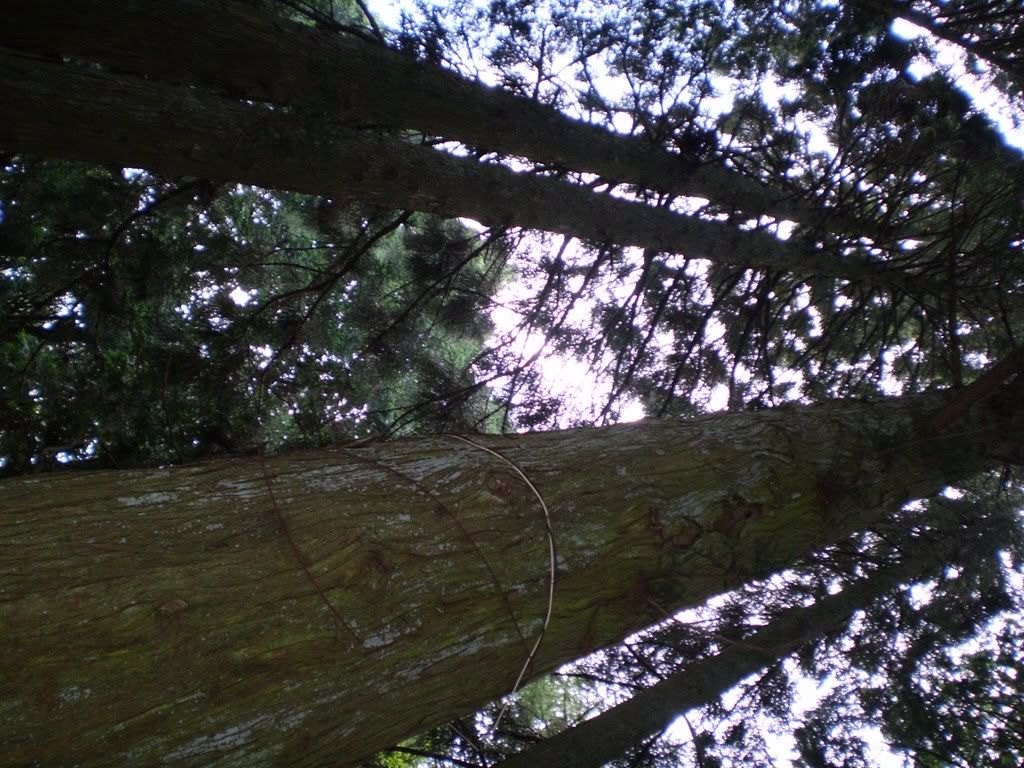
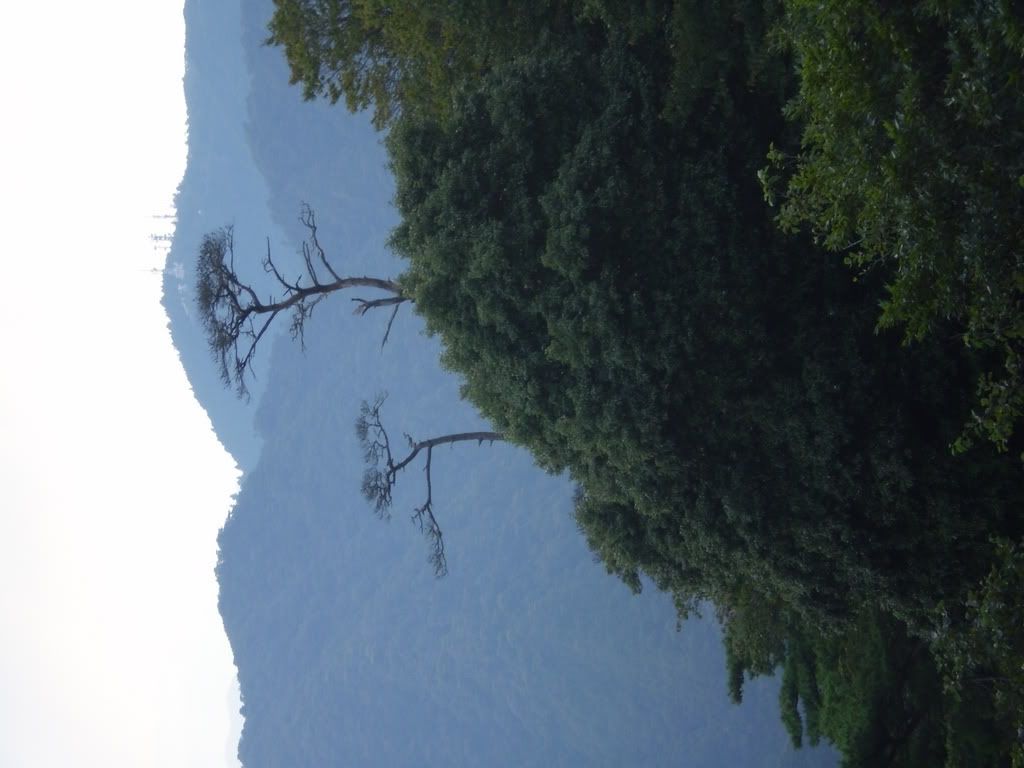
Monday, October 1, 2007
Cleaning up the schoolyard

For some reason, spending an afternoon with 60 third-years bearing rakes, forearms and plastic bags, converting little piles of leaves and grass and twigs into big piles of leaves and grass and twigs, put me in mind of the ancient myth of Sisyphus.
And whatever that wriggly, bug-eyed silvery-grey thing was that lurked beneath one of the disgustingly cool and moist little mounds of compost (one which I subsequently avoided), I'm sure it was perfectly safe for droids . . .
Subscribe to:
Comments (Atom)
